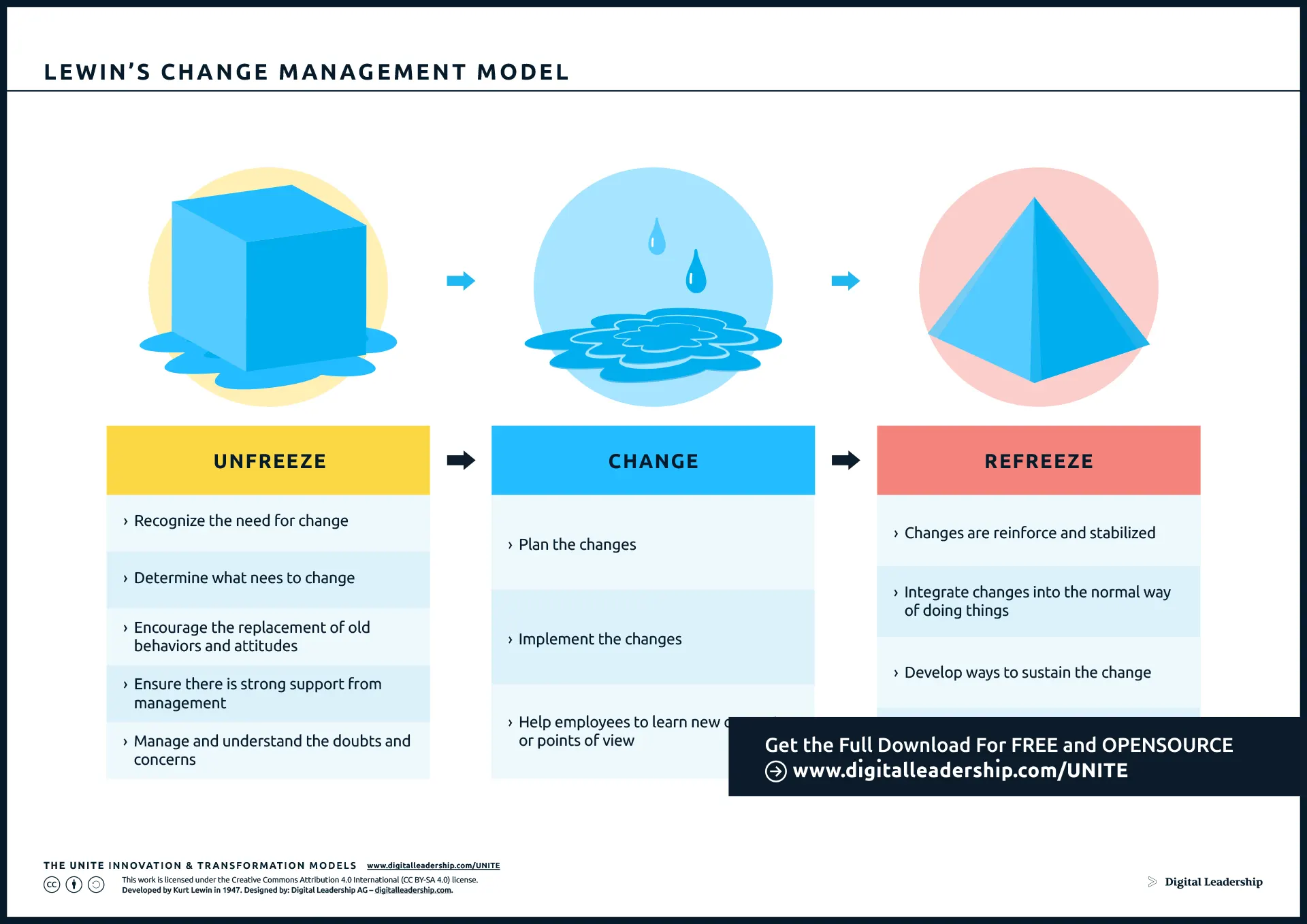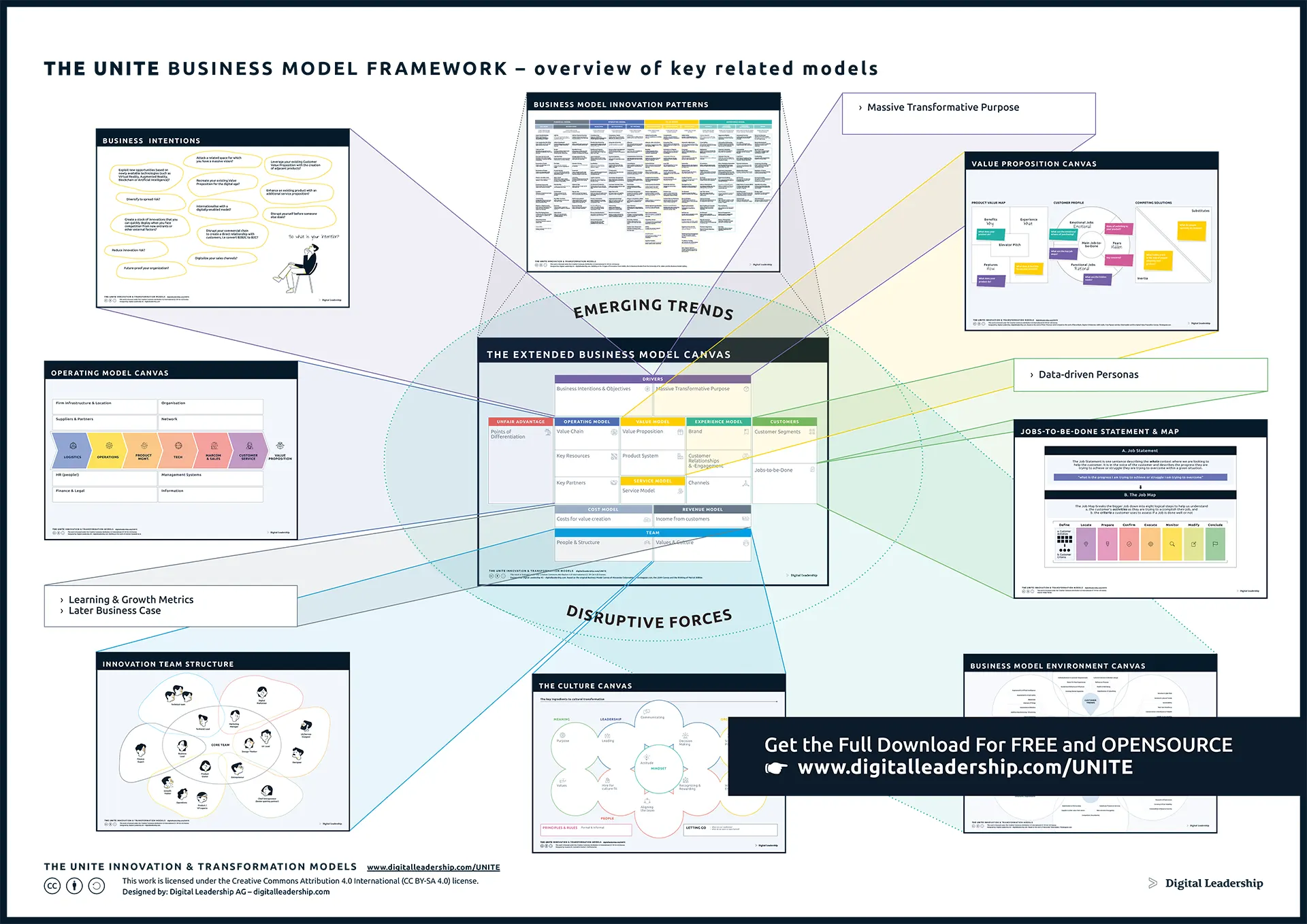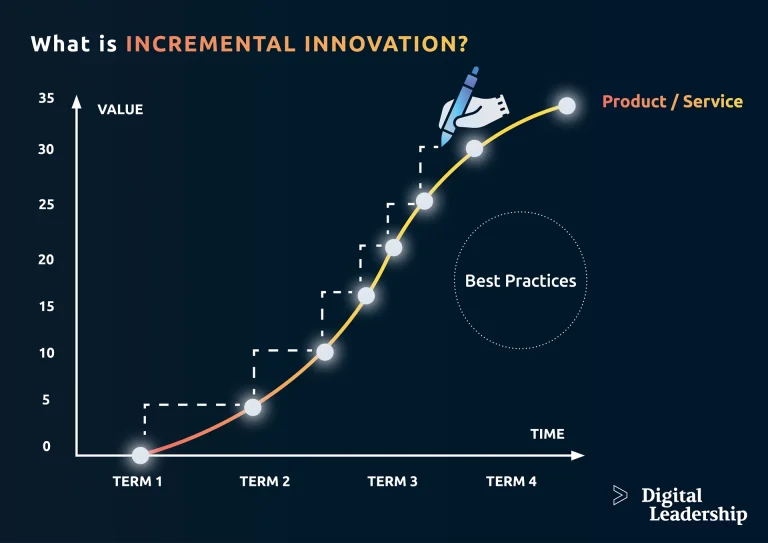What’s Organizational Planned Change
Published: 23 December, 2021
Organizational Development

Table of Contents
Planned change in organizational development is preparing the entire organization for new goals or a new digital business strategy. The direction can be culture, metrics, internal structures, processes, or other relevant areas.
Change does not appear randomly but needs a structured approach. With John Kotter’s proven 8 Steps of Change model, you have all the tools needed to structure and implement your change plan from the bottom up: You create the right climate and empower your organization to create sustainable change that matters!
Thus, it is important to note that planning for change and planning for innovation are not the same things. Innovation is a transformative process that requires significant change.
This post will explore planned change in organizational development and organizational development and change.
Theories of Planned Change in Organizational Development
There are three significant organization development and change cummings theories used to help the organizational members manage the change.
Lewin’s Organization development and change model
Lewin’s model is the basis for comprehending organizational change. It was first developed by Kurth Lewin and had three steps in it.
So, Lewin’s change model suggests increasing the factors that trigger a change in the organization while reducing the forces that preserve the existing status of the organization. This reduces the resistance to change.
The three steps involved in this model include:
- Unfreezing: As the name suggests, this step involves reducing the factors which maintain the existing organizational behavior at the current level. It is named unfreezing because the existing state is unfrozen here. Unfreezing is sometimes accomplished by the causes of psychological disconfirmation.
- Moving: In this step, there is a displacement of existing organizational culture, innovation strategy, individual or department to a different level. It also involves interfering in the present system to develop new attitudes and relevant organizational change.
- Refreezing: In this step, stabilization of the organizational equilibrium occurs. Supporting mechanisms and procedures are used to achieve refreezing, which forces the new organizational state.
These are the forces that gradually become regular, and the cycle continues.
Action Research Organization development and change model
Planned change in organizational development is a cycle, and the action research model focuses on the planned change as a cycle. The core research about the organization gives information to guide further action. The results are assessed on the amount of information provided.
Action research has the objective of assisting companies with implementing their planned change. It also helps develop general knowledge gathered from implementing the planned change so that it can be applied to other companies.
Contemporary approaches to change
The contemporary approaches to change are culled from an action research model. However, the difference here is that the member involvement is relatively high in the change process. This includes educating the members of the organization about their company and how they should change it to apply the planned change.
Steps in Planned Change in Organizational Development
Once business leaders commit to planned change in organizational development, they need to create a logical step-by-step approach to accomplish the objectives. Planned change requires managers to follow an eight-step process for successful implementation, which is discussed below:
Identify the need for change
Identifying or recognizing the need for change happens at the top management level or in peripheral parts of the organization. The change may be necessitated due to internal or external forces, and the senior management team determines it.
Develop goals of the change
it is important to note that you need to determine why the change is necessary before any action is taken. The goals that change need to be defined before starting the planned change in organizational development. Both business opportunities and problems must be evaluated. Then it is important to define the needed changes in terms of culture, structure, technology, products, and services.
Appoint a change agent
As the name implies, the change agent is the person who takes leadership responsibility to oversee and implement the planned change in organizational development. He may be selected from the management team or externally. The change agent must realize the need for organizational development & change, be it a product, service culture, or other areas. He should be open to new ideas, Creativity and innovation, and supportive of implementing those ideas into actual practice.
Analysis of the organization’s current state
in this step, the change agent gathers data to analyze the organization’s current state. This data gathering has only one sole intention: to prepare existing employees for organization change and development. Preparing employees for this planned change requires direct and forceful feedback about the negatives of the organization’s current state compared to the desired future state. It also involves sensitizing employees and stakeholders about the need for the planned change. This will motivate them to overlook the organization’s current deploring state and adopt the new planned change.
Select the implementation method
This step requires deciding on the best way to bring about organization development and change cummings. Different possible methods of implementation will be presented. Once all the queries are solved, the chosen plan is selected for implementation. Managers and business leaders must ensure that they are open and self-motivated towards change. They understudy organizations that have implemented new ideas, talk to people with different views and ideas, and use external performance standards such as competitors’ progress.
Developing a plan
As the name implies, thorough planning takes place in this step. This phase also determines the when, where, and how of the plan, otherwise known as the specifics of the plan. The plan acts like a road map or GPS map, providing direction for the organization. It considers specific events and activities that must be integrated to produce the planned change. It also delegates responsibility for each of the goals and objectives.
Implementation of the selected plan
There could be multiple plays and innovation strategies in the entire process, some of which may be rejected or selected. After much deliberation and the right questions answered, the selected plan is implemented. Day-to-day problems faced by employees during the implementation of change can dilute the excitement of the change. It is the responsibility of business leaders and managers to maintain the excitement for the change by providing the required resources for the employees. They can also encourage the employees to develop new skills and reiterate the change by having a strong support system for those employees who drive the change in their teams.
Follow-up and evaluation
During this step, managers and business leaders must compare the results to the established goals in step 4. Therefore, it is important to sincerely determine whether the goals were met. If necessary, a complete follow-up should be done to determine the completion since a positive result is expected by implementing a planned change in organizational development.
Benefits of Organization Development and Change
Increasing productivity and efficiency comes with many benefits. One of the best ways to encourage positive results in these metrics is by using a well-thought-out organizational development structure. Organizational development and change are used to equip an organization with the right tools to adapt and respond positively to changes in the market.
The benefits of organization development and change cummings include the following:
Continuous development
Entities that participate in organizational change & development continually develop their digital business models. Organizational development creates a constant pattern of improvement in which strategies are developed, evaluated, implemented, and assessed for results and quality.
Increased vertical and horizontal communication
One considerable merit of organizational development is effective communication, interaction, and feedback in an organization. An effective communication system aligns employees with the company’s core values, objectives, and goals. An open communication system enables employees to understand the importance of change in an organization. Active organizational development increases communication in an organization, with feedback shared continuously to encourage improvement.
Employee growth
Organizational development and change emphasize effective communication, which is used to encourage employees to effect necessary changes. Many industry changes require employee development programs. As a result, many organizations are working toward improving the skills of their employees to equip them with more market-relevant skills.
Increased profit margins
Organizational development and change influence the bottom line in many ways. As a result of increased productivity and innovation, profits and efficiency increase. There is a reduction in overall cost because the organization can better manage employee turnover. Finally, after the alignment of an entity’s objectives, it can focus entirely on development and product service quality, leading to improvement in customer satisfaction.
Related: Introducing the UNITE eXtended Business Model Canvas
Conclusion
Organizational development and change are necessary for every organization, and its implementation has to be done methodically. The number of steps in planned change may vary, depending on the organization and the type of industry. Nonetheless, organizations must be prepared for the change.
Planned change in organizational development is essential, as it helps organizations transition into a more productive phase. Change helps to bring new ideas and ways of doing things, and it ensures that an entity is profitable and innovative.
The UNITE Business Model Framework: A Framework for Innovation Success

Designed By: Digital Leadership AG


































 Book How to Create Innovation
Book How to Create Innovation